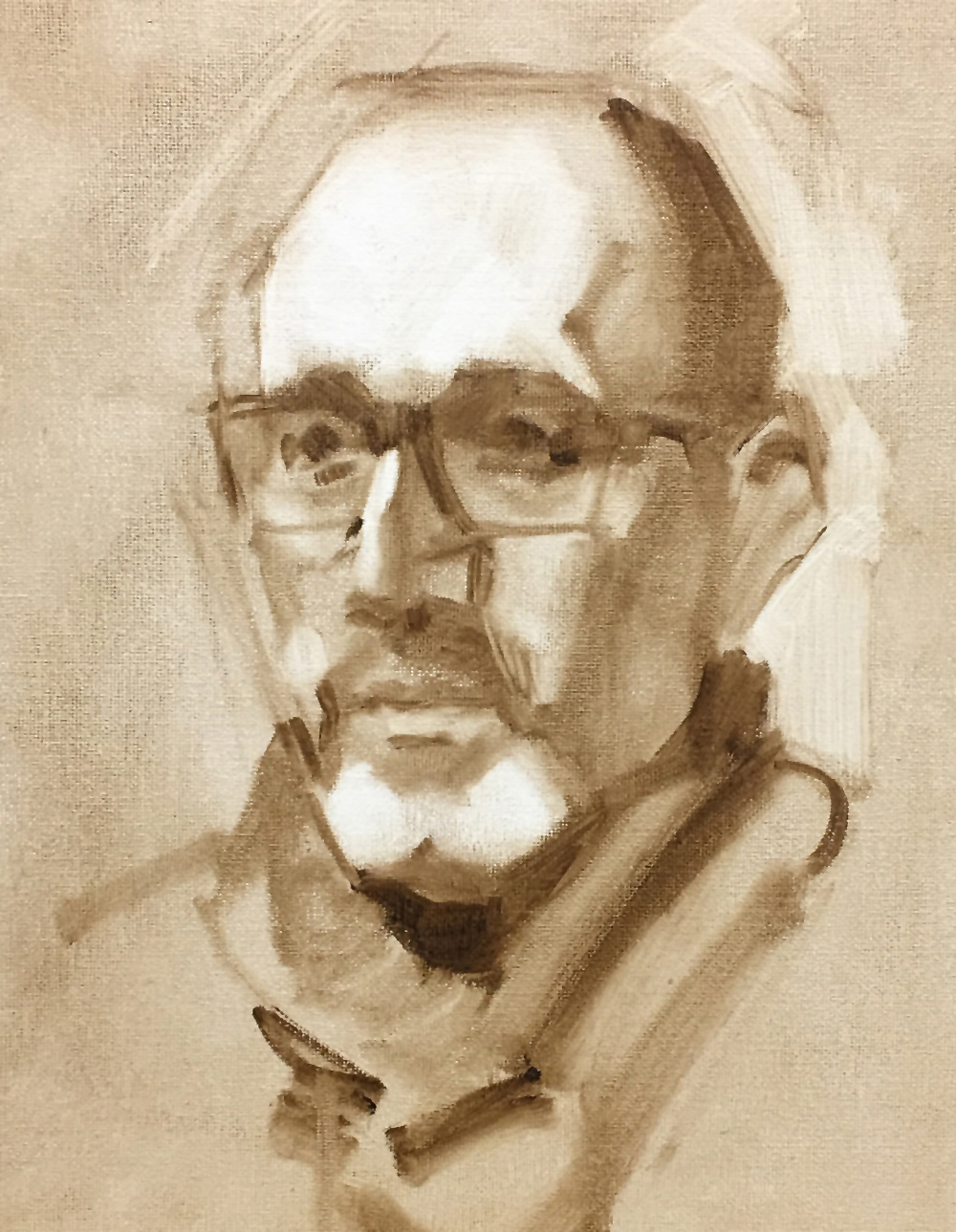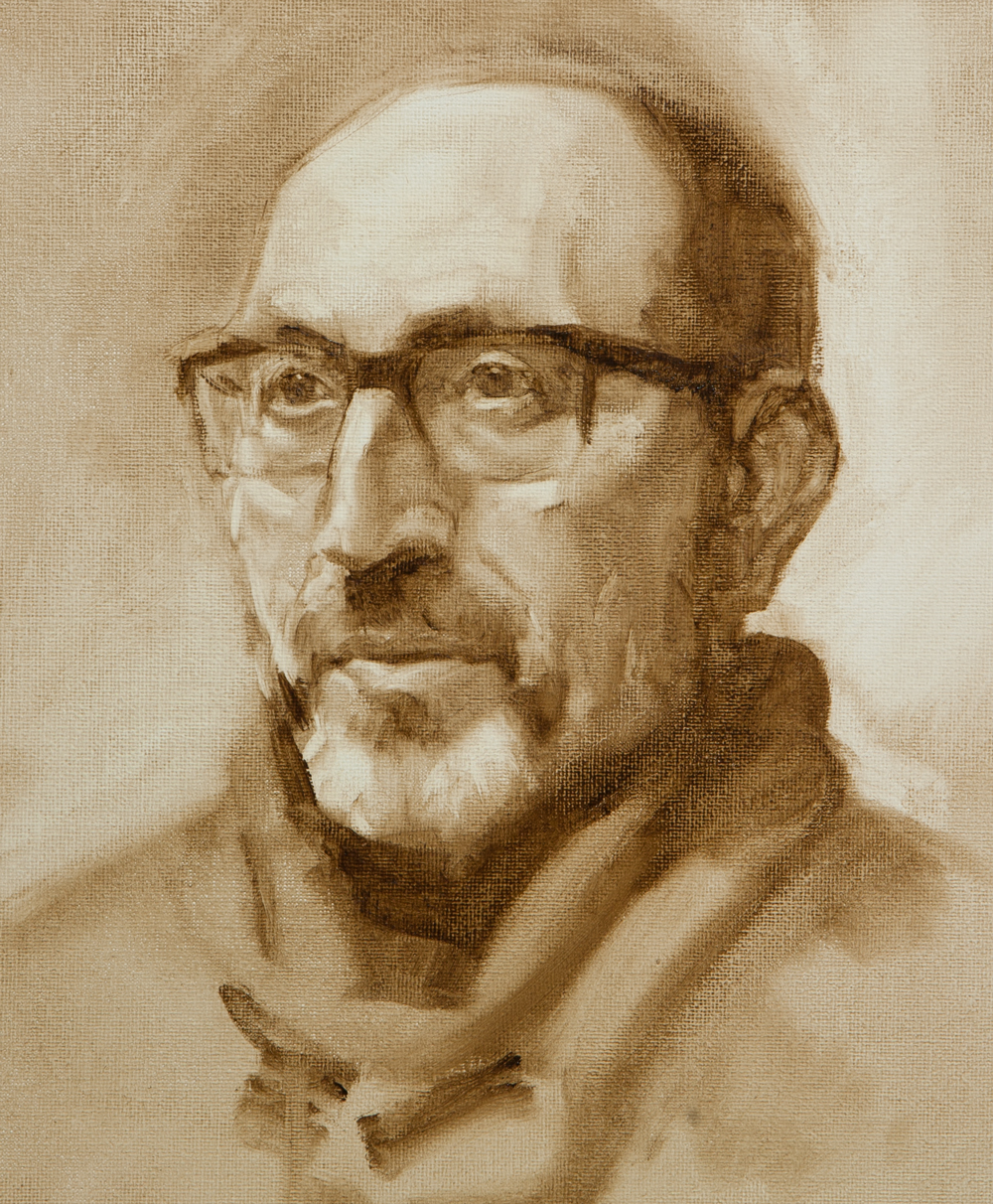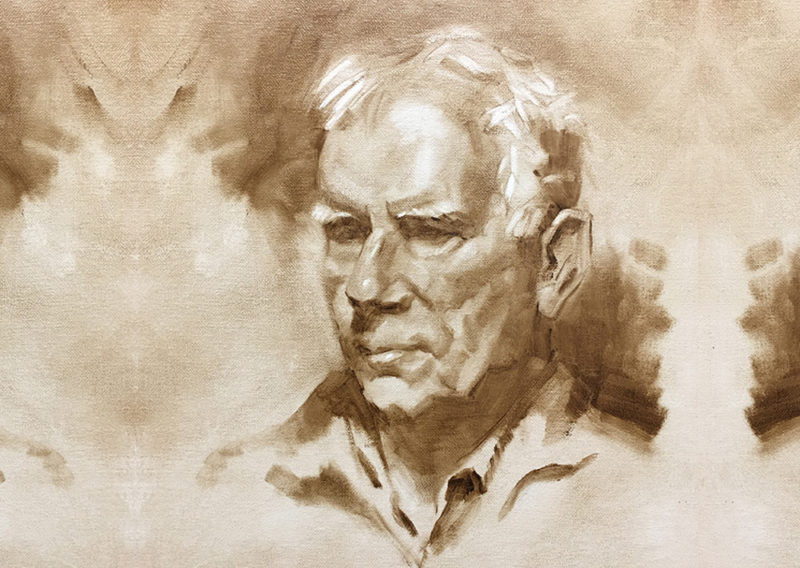There are countless ways how to start a portrait in oil.
I have already made a video on Youtube with four different options. Three of these are based on copying a photograph in one way or another. Aside from much appreciation, I also received considerable criticism on this video. Most negatives come down to the fact that it should be prohibited to copy a photo. I should be crucified for giving explanation about it. Many classical art teachers would join this crusade against what they call the big flam. I have written about that several times.
For many people, however, it is far too difficult to achieve a portrait which looks good, purely based on visual perception. And yet these people have the passion to paint.
Should I then forbid them to find a way other than the “one and only pure way”? Nope! Not everyone has the talent of Velazquez or Sorolla. So I continue to give my advice and teach these people the most important thing, namely the pleasure of painting.
Having said this, it is of course very cool to train your drawing skills. It gives enormous satisfaction to be able to paint a nice portrait from perception. And I know it takes a lot of practice. It never stops; even I am still practising. In this way, every Tuesday a group of artists from the neighborhood join and paint and draw from a model.
I’ll show you how I usually start a portrait in oil.

The sessions with the model last 3 x 20 minutes. One week I do the underpainting in Raw Umber, the following week in color. Again 3 x 20 minutes. Just before the model comes I start lubricating the canvas with a thin cover of Raw Umber. I use a large, old paint brush and “polish” the paint on the canvas. What is too much I take off with a cloth. It takes some effort because I don´t want to use medium. It provides a wonderful surface to sketch in oils. I paint the portrait in simple lines and shapes. In the light parts I remove the under layer with a cotton wimp with turpentine. In this way I can quickly get a general impression.

The second image is after the third twenty minutes. If you compare the first sketch with the second one, you can see that I do not immediately have the shape and proportions correct right from scratch. The forehead is too long, making the face look too narrow. However, I have every possibility to correct in this technique. I only have to pay attention to the shapes and the drawing. I can easily add paint and remove it if necessary.

The following week I paint the portrait in color. The underpainting is dry now and I only have to pay attention to the color, no doubts about the shape
Below is a brief overview of the colors I used but perhaps you have already seen this information last week on Facebook.
General skin tones:
Lights: Titanium white + terra rosa + yellow ochre
Halftones: Less white + terra rosa + yellow ochre + a touch of chromium oxide green.
Darks: Burnt Siena + Veridian green.
On the nose some Cadmium red light added to the light mix of flesh tone.
On the glasses some accents of Ivory black
Deep shadow around the eye: Transparent oxide red.
In the background I applied a lot of turps. In the face no medium at all.

Hello,
What do you paint on? Canvas? on your youtube videos it alost looks like paper. (the painting of the young girl with dark hair centre parted.).
Also, do you thin down the underpaint and what colour is it you use please?
Thank you.
Julie.
Hi Julie
Sorry for the late answer.
I usually paint on canvas. I apply three layers of Gesso. Lately I paint on DM board. Before the three layers of Gesso I apply a sealer.
Best.
Ben
Yo también empleo tablero de DM además de lienzo, sabía lo de gestos, pero ignoraba lo de aplicar “sellador” supongo que será para eliminar posibles poros. gracias Juan Carlos
No solamente para eliminar poros, mas bien para sellar todo el superficie de DM.
Saludo.
Ben
Hello Ben,
can I have an idea about the sizes of your canvas, please?
Thank you very much.
usually aroun 30 x 40 cm or 40 x 50 cm. for only the head.
I’ve just read your article. Can i thank you from my heart for standing up for the less talented and those who are dreadfully intimidated to paint from life. I have very little natural talent but absolutely love painting and have practiced from YouTube videos like yours which has allowed me to grow, albeit slowly, as a painter. Thank you kindly. Saira Zhang
thank you for your kind words